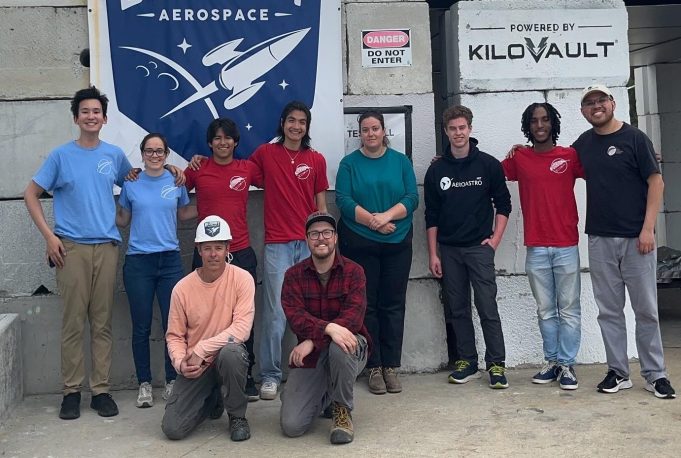MIT Rocket Team successfully tests liquid bi-propellant rocket engine
This May, the MIT Rocket Team successfully tested its bi-propellant liquid rocket engine, the culmination of a seven-year-long project.
The Rocket Team’s liquid bi-propellant engine, Helios, uses cryogenic liquid oxygen and ethanol as propellants. The goal was to create an engine capable of producing 360lbf of thrust over 5 seconds. The project presented many daunting logistical and complex technical challenges, and it is a rare achievement given the low likelihood of a rocket engine as complex as Helios succeeding on the first try.
“This is our first (and likely last) engine utilizing cryogenic propellants, and the first test for Rocket Team of a liquid rocket engine using a converging-diverging nozzle design,” explains Nigel Barnett, the liquid propulsion team lead.
This success wasn’t the Rocket Team’s first hot fire test: the liquid propulsion team conducted a test of Project Pyralis, an ethanol-nitrous oxide aerospike engine, in December 2014.
The team began working on its liquid dual-propellant liquid rocket engine in 2017, but progress was severely delayed by COVID, with everyone off campus for so long. The team worked on a different liquid rocket engine called Romulus during the pandemic. Work continued on Helios when the team returned to campus but was further delayed because of difficulties finding a suitable testing location.
“Usually, the Rocket Team does static fire testing at the Crow Island Airport for our solid propellant motors,” says Barnett. “However, since the liquid engine we built used the cryogenic propellant liquid oxygen, we had to take extra safety precautions to acquire our propellants and were restricted in where we could test them.”
They found their current testing site at bluShift Aerospace last year. The test was initially planned for November of 2023, but after discussions about liquid oxygen with bluShift and industry expert David Gregory (New Frontier Aerospace), the team decided to redesign part of the test stand due to technical complications and a desire for increased safety when filling the test stand with liquid oxygen.
Following the successful test, Helios cannot be used again because it ablated as designed, and the nozzle is now melted. In the future, the liquid propulsion team is developing a new ethanol and nitrous oxide engine called Polaris; this is the first engine they have designed from the beginning for use on a flight vehicle. The team plans to complete and conduct testing for this engine sometime next year, with work for a liquid propellant demonstrator rocket beginning next year utilizing Polaris.
With thanks to the liquid propulsion team:
Nigel Barnett, Jonathan Beas, Alex Gale, Kevin Garcia, John Posada, Garrett Robinson, Daniel Rojas, Elizabeth Tupaj, Amir White, Phoenix Wu.




